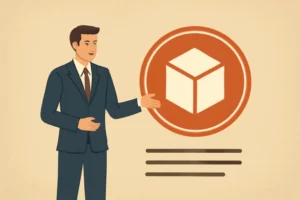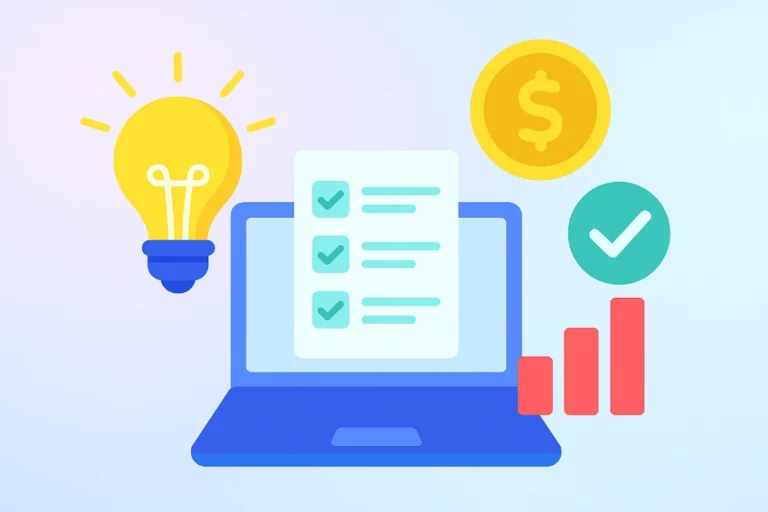Every new idea comes with excitement, vision, and the promise of solving a big problem. However, turning an idea into a successful product requires more than passion. It requires clarity, focus, and deliberate execution.
Rather than attempting a complete solution on day one, successful innovators begin with a minimal version of their product. This less-is-more approach, commonly referred to as a minimum viable product (MVP), allows you to test your idea in the marketplace, gather feedback, and conserve resources. It facilitates quicker market entry, quicker learning, and reduced risk.
This post examines how to create that first cut effectively and inexpensively, especially for early-stage entrepreneurs facing limited financial resources.

The Strategic Benefit of Beginning Small
Minimizing Risk with Precision
Releasing a reduced product allows you to test your central idea without committing to complete development. It’s an in-real-life experiment that will enable you to gauge user reactions with minimal cost. By limiting scope, you avoid creating unnecessary features before knowing what your users want.
Gaining Early Feedback
Entering the market with a minimalist solution allows quicker user interaction. This early start provides critical feedback at the moment when your offering is most malleable. Every insight serves as a stepping stone to further refinement and pertinence.
Maximizing Efficiency
By concentrating your energy on one key function, you get more for your money. You’re avoiding making tools or parts that aren’t very functional, and you’re able to put time and resources where they will be used most efficiently.
Learning Through Use, Not Assumptions
The theory does not survive exposure to reality. Watch your users interact with your product and discover the most. These authentic experiences reveal the gaps, highlight successes, and guide the path to your next step.

Defining Your Essential Core Offering
Clarifying the Problem
The first and most important step is defining the problem your product will address. This is achieving a specific situation in a clearly defined audience. Without the specificity, even the most advanced solution can still fail.
Concentrating on a Single Solution
Please resist the temptation to do it all at once. The goal of your initial product is to deliver one benefit. Trim off unnecessary features and find the most concise expression of your idea that can have a meaningful impact.
Prioritizing Features
To accomplish this, it is helpful to use an organized approach. Below is a matrix to help sort features along the lines of priority and timing.
Feature Prioritization Matrix
| Category | Description | Example (Task Management Tool) |
| Must Have | Essential in solving key problem | Add/Remove Tasks, Mark as Completed |
| Should Have | Increases user-friendliness but not necessary on launch | Basic Sorting or Categorization Options |
| Could Have | Nice to include for future releases | Reminder Alerts, Sharing Options |
| Will Not Include | Outside the current scope or unnecessary for validation | Analytics Dashboard, External Integrations |
Your launch must consist solely of the items in the “Must Have” column. They are the features that bring your concept to life in the most basic sense.
Inspiring Journeys: Real-World Examples
Dropbox
Dropbox began not with the finished product but with a lean video. The video demonstrated how the tool would be utilized and provided potential consumers with an idea of its value. The tremendous feedback and response guaranteed that there was a demand for the concept. The team then proceeded to invest in developing the whole application.
Airbnb
Before becoming an international hospitality platform, Airbnb began with a small experiment. The founders offered air mattress space in their apartments to conference attendees who were struggling to book hotel rooms. That modest experiment proved that there was a demand for peer-to-peer accommodation at a reduced price. That initial contact provided the insight that went into the larger platform that followed.

Developing Your Core Product on a Lean Budget
Relying on What You Already Own
Don’t make bespoke tools unless necessary. Tools such as Notion, Google Sheets, or Airtable can simulate product behavior, allowing you to test concepts at little to no cost.
Finding No-Code and Low-Code Platforms
Sophisticated software like Glide, Webflow, and Bubble enables non-technical entrepreneurs to craft completely functional apps. The tools bypass the need for complicated programming without sacrificing real user testing and interaction.
Intentional Outsourcing
Where specific development work requires professional expertise, turn to employees of freelancers in scopes of work. This avoids the cost and commitment of establishing a whole in-house team upfront.
Prioritizing Function Over Form
Branding and design can be addressed later. First, how your product performs is far more critical than its appearance. Focus on building a tool that does one thing well and does an honest job, even if it does appear plain.
Testing, Learning, and Evolving
Gathering Useful Feedback
Your first product is not your last. Its real value is in what it teaches you. Work closely with your first users, ask them questions gently, and observe how they interact with what you have created.
Measuring Performance in Action
- User Interviews: Provide qualitative insights and reveal emotional responses to your product.
- Usage Analytics: tell you where users spend their time and where they tend to avoid.
- Version Experiments: allow us to compare various feature directions to determine which one resonates most with users.
Committing to Iteration
Improvement doesn’t result from shipping once; improvement results from listening, learning, and changing all the time. A loop of feedback, revision, and redeployment lets your product grow in sync with actual user needs.
Conclusion:
Beginning with a concise and lean description of your idea is a powerful method to ensure that you are solving a specific problem. It helps you keep your investment in check, learn on the go, and develop strategy-based facts.
By starting small, staying close to your users, and iterating carefully, you build not only a product but a resilient solution that gains in value over time. That is the actual basis for sustainable innovation.


